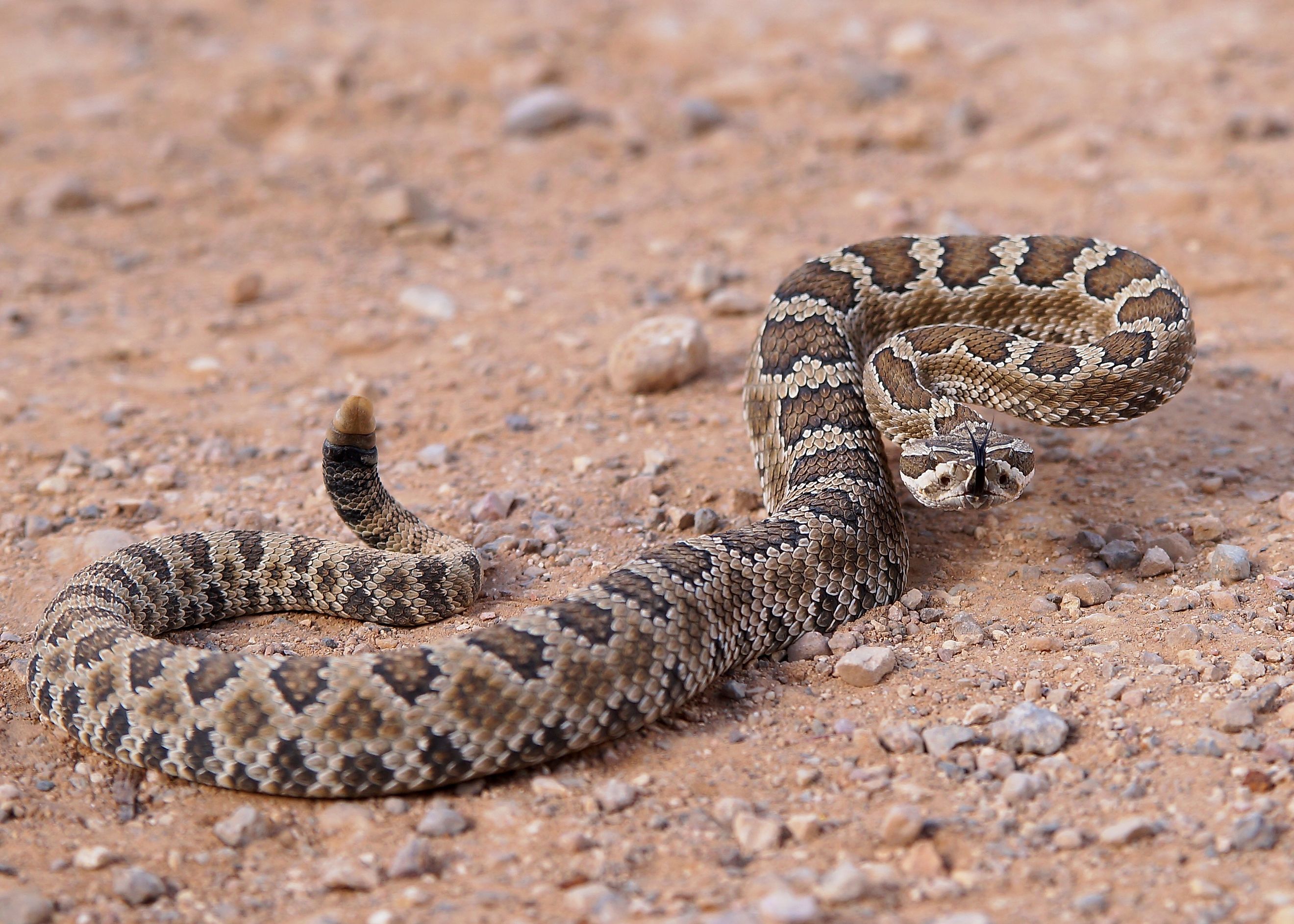
The Venomous Snakes Of Nevada
Nevada is home to dozens of snake species, some of which pose a risk to people and pets. Venomous snakes are members of the Viperidae family — the pit vipers. They include the Great Basin rattlesnake, the Mojave Desert sidewinder, the Mojave rattlesnake, the Panamint rattlesnake, and the Southwestern speckled rattlesnake. Pit vipers are named for facial “pits” or heat-sensitive depressions between their eyes and nostrils, which help them detect prey even in total darkness. Pit vipers have fangs tucked against the inside of the mouth until it strikes, at which point its fangs swing down to dispense venom into prey.
Great Basin Rattlesnake (Crotalus oreganus lutosus)

The Great Basin rattlesnake is a venomous pit viper found throughout all of Northern Nevada and parts of Southern Nevada. The Great Basin rattlesnake is a subspecies of the Western Rattlesnake and is at home amidst rocks and boulders on hills and mountainsides and flat deserts and scrublands. Crotalus oreganus lutosus is a light brown snake with darker spots along the middle of its back, but it also comes in shades of brown, gray, olive, and yellow. Like most other rattlesnakes in North America, they have a thick body, the characteristic arrow-shaped head, and a rattle on the end of their tail. Adults of this feisty ambush rattler grow to 3.5 feet in length thanks to its diet of lizards, birds, other snakes, and small mammals like ground squirrels, mice, rats, rabbits, and hares. The Great Basin rattlesnake is sometimes mistaken for a gopher snake, a nonvenomous snake with a slender body and head. Shaking their tails along the brush to make a rattling sound, gopher snakes try to imitate the rattlesnakes.
Mojave Desert Sidewinder (Crotalus cerastes cerastes)
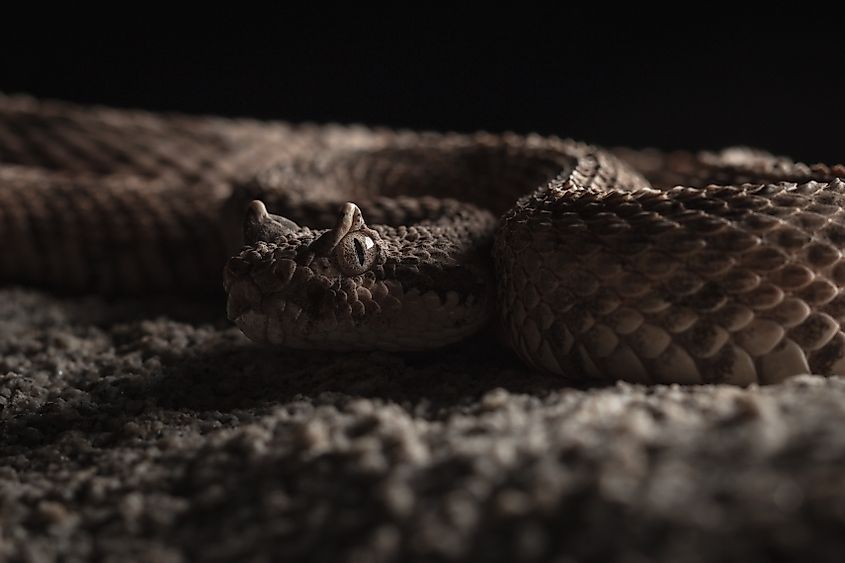
The Mojave Desert sidewinder is a pit viper with lighter body colors and darker markings that help it blend in with its desert landscape. It prefers sandy terrain like that in Nevada’s Mojave Desert. It lives near mammal burrows, under large rocks, in sandy washes and sand dunes with thickly vegetated areas, and rocky shelters. Crotalus cerastes cerastes are typically a sandy tan, gray, or cream color and patterned with dark blotches of brownish grey on the back and sides. The black-tipped rattled tail often has several rings. There is a dark cheek stripe on both sides of the head. It is sometimes called the “horned rattlesnake,” thanks to the appearance of horns over its eyes. These horns are actually upturned scales, not real horns, and are thought to protect the snake’s eyes from the sun. The size of a mature Mojave Desert sidewinder is 1.5 feet to 2 feet, with some growing as large as 2.5 feet in length. It preys mainly on lizards and small mammals, like pocket mice and kangaroo rats. Its name comes from the S-shaped curve it makes as it throws its body to the side to move forward.
Mojave Rattlesnake (Crotalus scutulatus)
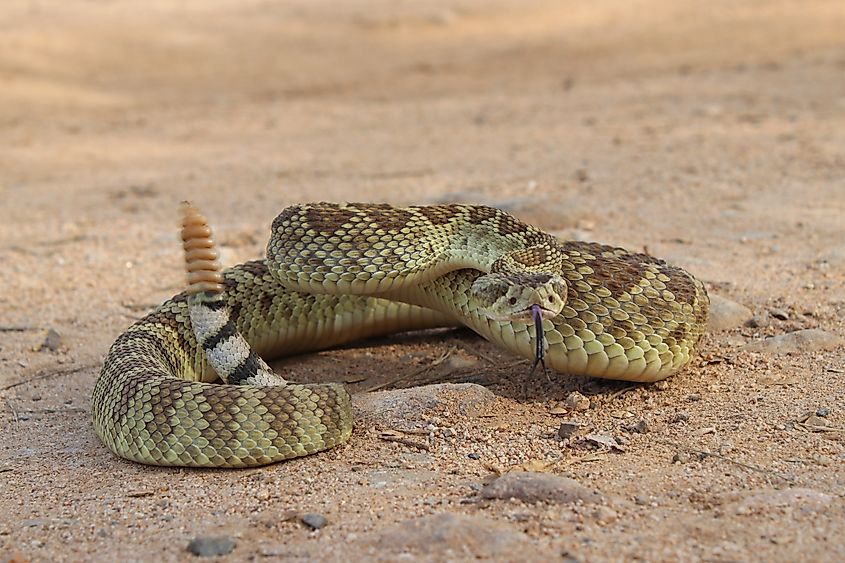
The Mojave rattlesnake is a highly venomous pit viper that calls Nevada's southern, northern, and eastern regions home. It prefers living in flat desert valleys or lower mountain slopes with little moisture. It is often found in sparsely vegetated areas containing creosote, sage, mesquite, cacti, and Joshua trees. The snake's body is brown, grey, or sometimes olive-greenish or even yellow. A diamond-shaped pattern is visible along the snake's back but fades into a banding pattern at the end of its black and white ringed tail. The rattlesnake has a large, triangular head wider than the neck when viewed from above. A mature Mojave rattlesnake is 3 feet to 4 feet long, with some growing as long as 5 feet. Crotalus scutulatus is an ambush predator, which means they wait for their prey to cross their path before striking. They have a reputation for being aggressive towards humans and other rattlesnakes. They are not picky eaters, and their diet consists of lizards, other snakes, and mammals, some of which are as big as rabbits, which they consume whole.
Panamint Rattlesnake (Crotalus mitchellii stephensi)
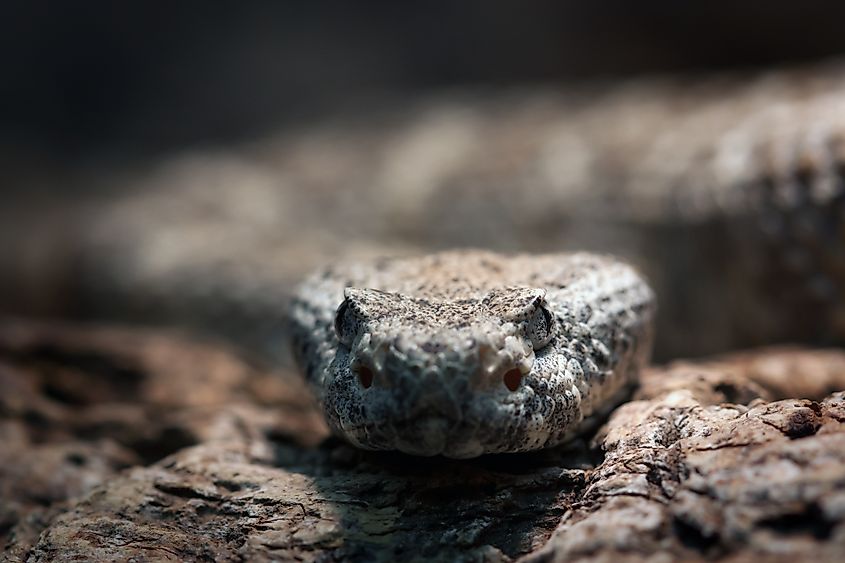
The Panamint rattlesnake is a mid-sized venomous pit viper found primarily in central and southern Nevada. It is often found in hilly or mountainous areas with rocky terrain or scattered rock formations at 3,000 feet to 7,900 feet in elevation. During cooler weather, it retires into canyons or brushy deserts. Crotalus mitchellii stephensi are tan to gray, with thick gray-brown or red-brown splotches, which help the snake blend well with the rocks and soil of its habitat. It has a broad triangular-shaped head, and its tail is black with wide, flat rattlers. A mature rattlesnake is 3 feet to 4.5 feet in length. The rattlesnakes are highly nocturnal and are active from just before sundown until just a few hours after sunset, likely due to the extreme contrast in weather where they live, where the daytime temperatures are dangerously hot, but nighttime temperatures present a cold threat. These ambush predators have a diet of small mammals, lizards, and ground-nesting birds.
Southwestern Speckled Rattlesnake (Crotalus mitchellii pyrrhus)
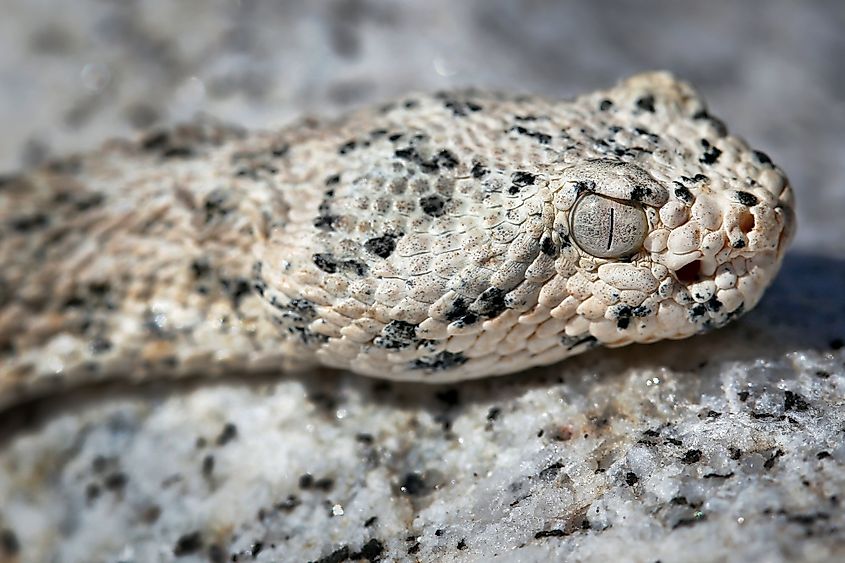
The Southwestern speckled rattlesnake is a mid-to-large venomous snake most easily recognized by its faded pale sandy gray to brown colors. In Nevada, the rattlesnake is lighter colored in central and eastern portions of Clark County, near Lake Mead, while a darker form occurs in western Clark County near Red Rock Canyon. It is considered the most common rattlesnake near Las Vegas but also an elusive one. Expert climbers, the southwestern speckled rattlesnake thrives in rugged canyons and rocky mountain areas with outcrops and boulders at elevations up to 8,000 feet. Crotalus mitchellii pyrrhus grows to approximately 4 feet long, with a broad, triangular head, a lack of markings on its face, and a narrow neck. The rattlesnake attempts to blend in with its surrounding environment with its nearly patternless light colors, but its broadly banded tiger-striped tail is a giveaway. The tail is striped with black and white rings, but the black rings specifically do not encircle the entire tail. Like most rattlesnakes, they are ambush predators with a diet primarily of rodents, rabbits, and lizards. It remains inactive as it brumates (a state of dormancy) during colder winter, but once temperatures rise in the spring, it emerges from its sheltered crevice to mate. In late summer, females give birth to live young, usually three to 11 offspring in a single litter.
Summary
Nevada’s arid climate makes the Silver State an ideal snake habitat, offering warm, dry landscapes supporting their hunting and survival. From desert valleys to rugged hills, Nevada’s rattlesnakes showcase remarkable adaptability across diverse habitats, with the Great Basin rattlesnake blending into rocky northern areas while the horned Mojave Desert sidewinder thrives in sandy deserts. Each species is uniquely suited to its environment, illustrating the adaptability and versatility of the venomous snakes of Nevada.











